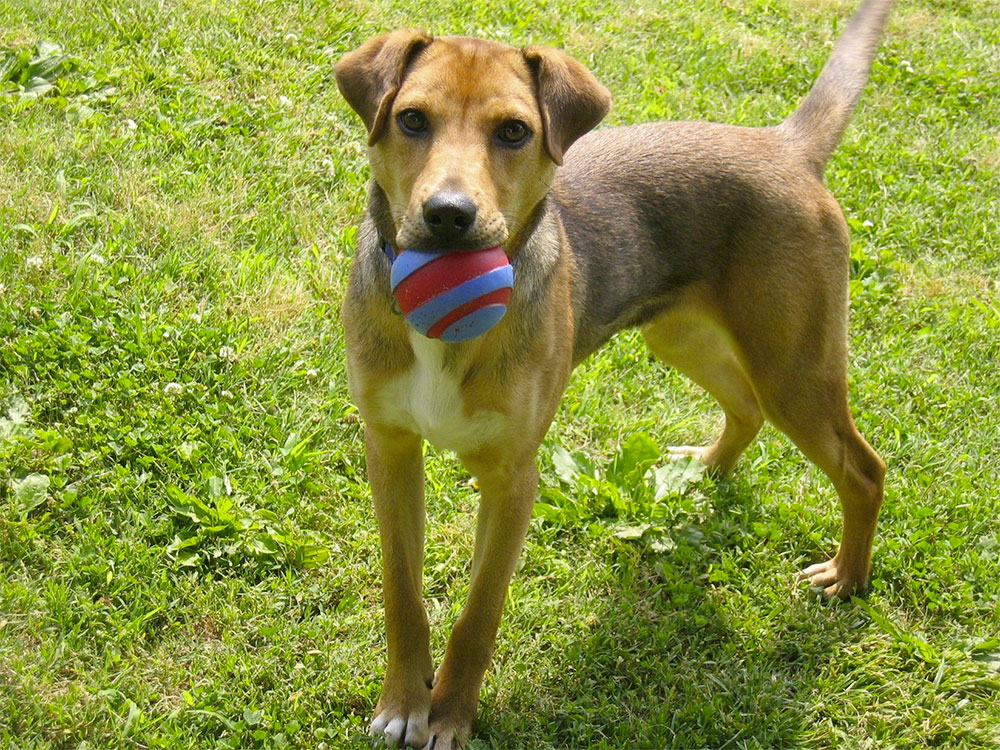
“All Work, and No Play: Why toys for your dog are important, and how to best use them
If you are like most dog owners, your house is littered with any number of dog toys. But you can’t figure out why, with so many toys of his own, Fido doesn’t really seem interested in them. It may be because they have very little value to him. In reality, your dog doesn’t need more than a few toys to be fulfilled. You just need to know how to make them valuable and fun for him. The key here is access. Restrict his access, and he will depend on you for “fun.”
Dog toys range from balls to fleecy/plush animals to squeakers to interactive toys (I.T.). They are a necessary component to a good relationship with a dog. What your dog will ultimately play with depends on his tastes and what you allow him to have, and what you have given value to. His tastes may change periodically, which is fine. Experts agree that rotating toys keeps the games fresh and fun–which keeps your dog more interested.
Toys are used for recreation and to teach manners. That’s right! Valuable toys can replace treats in your training regimen! As you may have figured out, the toys are most effective when YOU use them interactively with your pet, NOT when you toss them on the floor and leave your pet to his own devices. Dogs can entertain themselves without your help on occasion, but experts agree that playing with your pets is better. It is good exercise, it is fun, and it helps curb problem behaviors. Interactive play that simulates their natural hunting/chasing/capturing drive keeps them happy and healthy, and increases their bond with you.
What toys are best? It depends on your dog’s play style, level of training, and tastes. I recommend that dogs have at least one good fetching ball (more than one if they love to play ball); a good-quality fleece object made for dogs (i.e., no swallowable components); a tug rope; and a Kong© rubber toy, which doubles as a pacifier and interactive toy. Kongs are good for dogs who have to be crated or left alone for long periods of time. Toys that encourage cooperation between pet and handler are the best (fetch can be played with almost anything).
What about tug toys? If your dog loves to play tug-o-war, it will be up to you to decide if he should. Many breeds are naturally predisposed to tugging, and it can be a great outlet for these dogs, with a few rules kept in mind. Your dog must release the toy immediately when you tell him to, without grumbling in any way. You must initiate the tug game, not him, and you will decide when it ends. He is only allowed access to the tug toy during these play times with you–do not leave it lying around. Don’t allow him to constantly “win” the tug game, and always remove the toy and put it away when you are done. If your dog will cooperate with these rules, tug is a great way to reward high-drive dogs, and burn energy. NOTE: discontinue tug games immediately if your dog will not release his toy, or growls or snaps. Most of the time, dogs who react adversely to tug games simply have not had enough training. Do not give the dog who “cannot play nicely” any more chances to practice his unruly behaviors. Call a trainer.
Interactive toys are toys that your dog can play with alone or with you. An example is the Buster Cube, in which you place a portion of kibble and the dog releases it by turning the cube every which way. These types of toys stimulate the dog’s desire and need to learn.
OK, I’ve got the toys, now how do I add value? Keep this maxim in mind: “Anything we get in excess, we value less.” Here is a simple regimen that is nearly foolproof, if you follow it to the letter:
- Put ALL the dog’s toys away for at least 24 hours. 2-3 days is best. Make sure they are out of sight. (NOTE: the dog should have at least one chewing device available at all times–chewing devices are NOT considered toys for this purpose.)
- After the restriction period is over, bring out one of the toys when your dog is not completely distracted by something else–we want to make him inquisitive!
- Ignore dog. Exclaim to the world in general (not looking at dog) how wonderful the toy is, toss it in the air, wave it around, giggle, talk silly to it, make yummy noises as you pretend to eat it, & whoop it up big time. Run all over the house with it, dog jumping in excitement, and you completely ignoring him–and DO NOT allow the dog to have it!! This is important!
- After a few minutes of this crazy fun, put the item away again while the dog watches.
- Switch yourself “off” and go do something else.
- REPEAT the above 5 steps twice a day (once in a.m., once in p.m.) for 3 days.
- On the 4th day, “accidentally” allow the dog to “get” the toy as you are making a fuss over it. Play with him with it for a couple of minutes, then put it away again.
- Repeat step 7, gradually drawing out the play sessions up to 5 minutes or so. Keep them fun!
- Continue to put the toy away after each session–this is the only way it will remain valuable!
- Rotate “valuable” toys occasionally just to keep Fido interested.
To integrate toys into your training, simply allow the dog a few seconds to play with or mouth a valuable toy after he performs a command. For balls, do one throw/fetch after each successful command. It's easy!